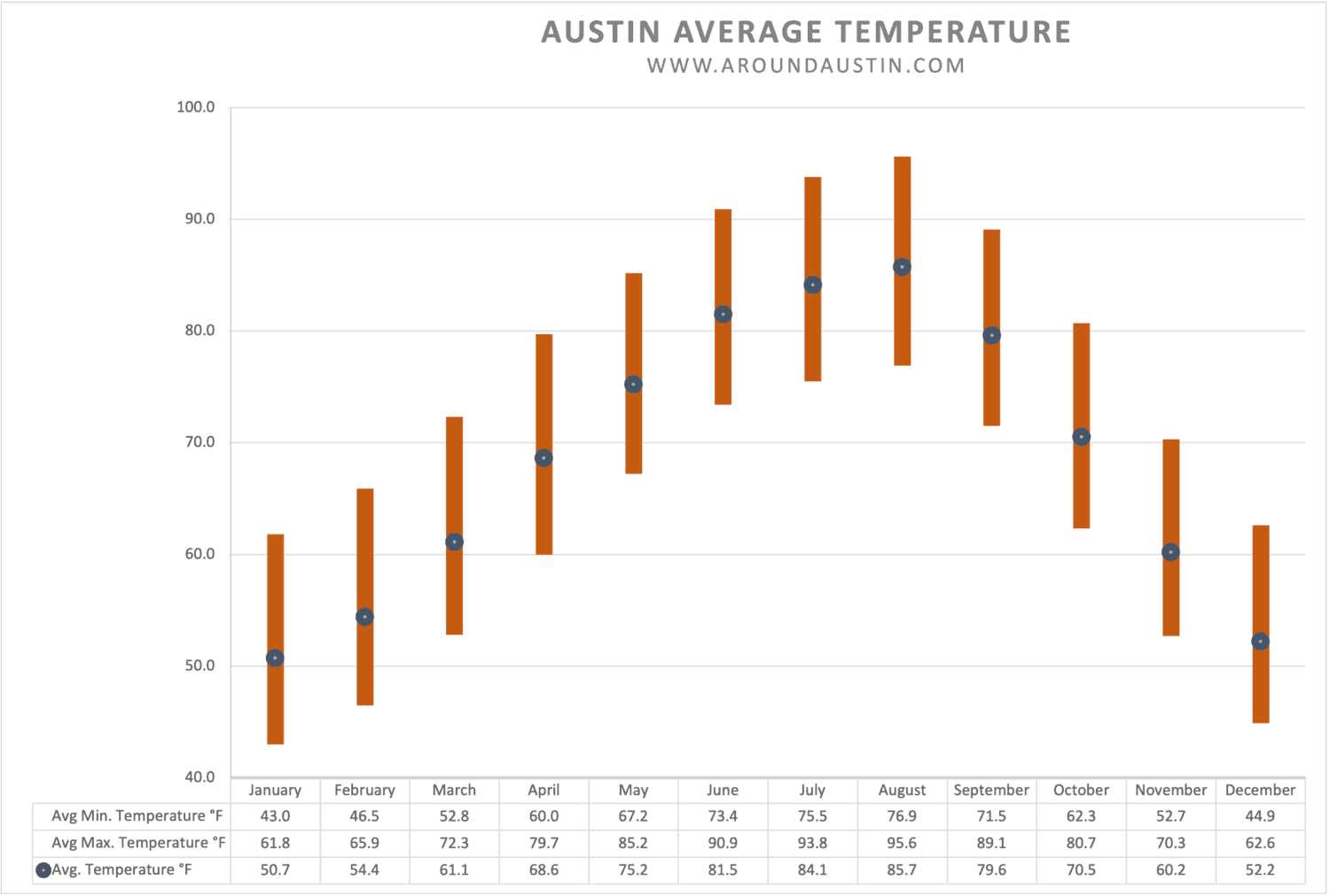The old saying “If you don’t like the weather in Texas wait a minute” isn’t actually true for a lot of the year in Austin, Texas. Austin winters are mild. Summers are predictably sizzling. High-pressure domes settle in over the city and the temperature doesn’t change for days on end. The spring and fall provide the ideal combination of sunny days and moderate temperatures.
I have to admit, now and then in late fall or early spring, a front can blow through and change temperatures quickly in Central Texas.
Technically speaking, Austin has a humid subtropical climate, which means it has long, hot summers and typically mild winters.
The temperature in Austin, TX generally ranges from 43°F to 97°F and is rarely below 30°F or above 102°F.
The warmest month in Austin is August, with an average high temperature of 96.4°F and an average low temperature of 75.4°F. The coldest month (with the lowest average low temperature) is January (42.6°F).
The hottest day on record was August 28 2011 when the temperature hit 111.9°F. The coldest low and overall temperature on record for Camp Mabry in Austin is -2 degrees on Jan. 31, 1949.
The average amount of rainfall in the city is around 35.5 inches of rainfall per year. The wettest month for Austin are May, October, and June are the wettest months of the year, in that order.
The average annual humidity in Austin is 67%. It rarely drops below 30%. May is the most humid month. March is the least humid month
2021 notwithstanding, snow is a rare occurrence in Austin–the city averages 0.3 inches. January and February are the two months it’s most likely to snow. Snow that actually lingers on the ground for a day or so occurs about once a decade.

